Dec 15, 2025
Dec 15, 2025
In the history of civilization, the large-scale electrification and consumption of the fossil fuel-based electricity became a world order and new experience in various parts of the globe including India only during the last century. To make the modern living easy and more comfortable, the consumption of electricity has increased many folds during the last 4-5 decades. However, the conscious nationalities have now also learnt with the passage of time that the fossil fuels, namely coal, petroleum, diesel and natural gas, etc., though abundant globally yet are exhaustible sources of energy and may last only for about another hundred years or so at the current consumption rate. It’s so because the process of the formation of the fossil fuels under the deep layers of the earth crust is very long and tardy process and cannot match the needs of usage vis-à-vis replenishment. Hence the express growing need for optimization of resources and, at the same time, exploring the alternative and reliable inexhaustible energy sources as a long-term solution of the human needs.
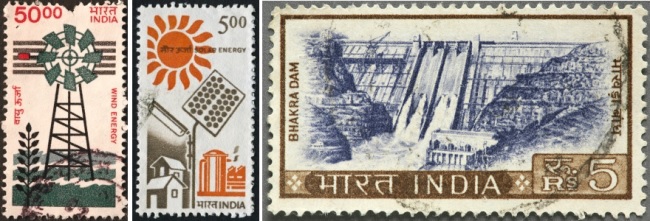
This is more so relevant for India which has rather limited resources of the coal reserves and already deficient in the resources based on petroleum products and natural gas. Consequently, a huge amount of the meagre national resources is already spent on the import of these products from abroad. The formation of these reserves under land or sea took millions of years and it is obvious that there is no way that these can be replenished in any timeframe that we can visualize to match constantly growing needs. Apart from the aforesaid limiting factors, the large-scale combustion of the fossil fuels leads to a very adverse impact on the global warming, environmental hazards and human health due to the release of the harmful gases and particulate matters like Carbon dioxide, Carbon monoxide, Nitrogen oxides, Sulphur dioxide, Mercury, fly ash, and so on. Hence the express need to look for the alternative exploration and use of the renewable and new energy sources.
New and Renewable Energy Sources: Aim & Objectives
Awareness towards the need of minimizing fossil fuel-based consumption and exploring new and renewable sources of energy had started growing towards the late 1970s and, consequently, a Commission for Additional Sources of Energy (CASE) was formed by the Government of India in 1981. Subsequently, as a sequel of this development, the Department of Non-Conventional Energy Sources (DNES) was constituted under the Ministry of Power in 1982. This arrangement continued for about a decade when the government increasingly felt the need of a separate and independent ministry for the continuous and uninterrupted growth of the non-conventional energy sector. Consequently, a full-fledged and independent Ministry of Non-Conventional Energy Sources (MNES) was created in 1992 with a separate Minister-in-charge for it. After nearly one and a-half decade’s experience and commensurate with the nature of the energy sources, the MNES was rechristened as the Ministry of New and Renewable Energy (MNRE) in the year 2006.
The development and usage of the renewable and new energy has assumed significance in recent the recent years with the growing concern for the country's energy security. Increased energy production and self-sufficiency was identified as the major driver for new and renewable energy in the country more particularly in the wake of the two oil shocks during the 1970s, which led to the sudden increase in the price of oil, uncertainties associated with its supply from the identified sources and the adverse balance of payments position constantly putting burden on the national exchequer. The Commission finding a reference in the preceding paragraph was entrusted with the responsibility of formulating policies and implementation of programmes concerning the development of new and renewable energy while simultaneously coordinating with the R&D in the sector. Despite all these policy initiatives and measures taken from the programme implementation, the pace of the development continued to remain rather slow and far from satisfactory, which took a major boost after the present Prime Minister Narendra Modi led government came in power in 2014.
The chief missions of the MNRE are to ensure energy security, energy availability and access, its affordability and energy equity. The energy security is to be ensured through the development and deployment of the alternate fuels such as Hydrogen, bio-fuels and synthetic fuels, in addition to the renewable sources like the wind, solar, small hydro, geothermal, bio and tidal power. The availability and access inter alia cater for the supplement energy needs of cooking, heating, motive power and captive generation in the rural, urban, industrial and commercial sectors. In the early decades, the cost of such energy production and supply was comparatively very high vis-à-vis conventional energy sources, the gap of which has been considerably minimized in the recent years. The goal of energy equity is not merely limited within country but also to reach at par with the global average through a diverse and sustainable fuel-mix. The overall vision aims at developing new and renewable energy technologies, processes, materials, components, sub-systems, products and services at par with the international specifications, standards and performance parameters in order to make the country a net foreign exchange earner in the sector over a period.
Ever since its formation, some of the more important jobs and programmes adopted by the MNRE included solar energy development, production and applications, small hydropower projects below 25 MW capacity, and all matters concerning wind, tidal and geothermal energies. In addition, it is also associated with the research and development all non-conventional and renewable energy development and associated programmes, including biogas and integrated rural energy programme. Its functions include research, design, development, manufacture, and deployment of new and renewable energy systems/devices for transportation, portable and stationary applications in rural, urban, industrial and commercial sectors. For the effective execution of these functions, activities like technology mapping and benchmarking; laying down of standards, specifications and performance parameters; aligning cost of the products and service; resource survey, assessment, mapping and dissemination; and quality assurance, etc., also fall within the overall gamut of this ministry.
In the energy context, one of the major concerns on account of the fossil fuels has been for minimizing the impact of the greenhouse gas emissions with significant carbon footprints worldwide by opting for the alternative sources of cheap, green and clean energy. Needless to mention, this alternative has been found in the renewable energy sources of the planet. By definition, the renewable energy falls in the category of energy which is constantly replenished in the nature. For illustration, the sunlight, wind, tides waves, rain, biomass and biofuels and geothermal heat are everlasting resources with a potential to serve as alternative of conventional fossil fuels in areas like electricity generation, motor fuels, water heating and rural energy needs. The added advantage of these sources is that they are abundantly available and can be tapped over a large geographical area as against the fossil fuels which are localized only in certain countries, regions and areas.
Current Status of Renewal Energy in India
Although non-conventional energy sources like sun, wind, tidal waves, etc., have been available for long and this potential was tapped in a limited way by many countries but real breakthrough and systematic efforts to tap it have been made only with the onset of the 21st century. The global outlook on renewable energy has considerably changed for good during the last ten years across the globe with India taking significant steps and leap forward under the current central regime. This country has witnessed constant technological advances, rapid expansion and application of the technology to exploit full potential of the available renewable energy sources. Fortunately, India is geographically placed in a region where there is no dearth of wind and sun light. In addition, the country also generates a significant amount of biomass annually. With already having a full-fledged ministry for the purpose, India has endeavored well during the last 9-10 years to tap these energies with unhindered development and growth as the popular means of futuristic affordable power.
Currently, India has one of the largest programs in the world on renewable energy products and systems. India is already tapping it’s wind and solar energy potential at a significant scale; besides, the north and north-eastern region of the country have tremendous potential for the big and small hydro power, of which small hydro projects (below 25 MW) fall under the purview of the MNRE. Towards the end of July, 2014, the country had the total installed capacity of the renewal energy from all sources at 33,447 MW. Of this, 32,424 MW (Table-1) belonged to the grid-interactive power from the electricity generated through the sources like wind, small hydro, solar, biomass, bagasse cogeneration etc., leaving only about 1023 MW as off-grid and captive power. During the last 9 years, the total capacity of renewal energy has reached to 131,515 MW by august 2023, including the miscellaneous off-grid capacity. Naturally, the key drivers for the promotion of the renewable energy are the existing demand-supply gap, large untapped potential, growing concern for the environment, imperative need to strengthen India’s energy security, pressure on high-emission industry sectors and need for a foreseeable and viable solution for the rural electrification.
In the following paragraphs, we shall briefly see the position of major renewable energy sources and their emerging trends in the country based on the latest data till August 2023.
Table-1 Grid Interactive Power (Capacity in Megawatts)
| S. No. | Category | As of Aug 2023 | As of Jul 2014 |
|
1. 2. 3, 4. 5. 6. |
Solar Power Small Hydro Power Biomass Power & Gasification Bagasse Cogeneration Waste to Power |
44,089.68 71,610.00 4982.75 *10261.87 - 570.38 |
21,692.98 2,754.00 3,826.18 1,365.20 2,680.35 106.58 |
|
|
Total | 131,514.62 | 32,424.29 |
In the aforesaid table, the Solar Power installed capacity includes Ground Mounted Solar, Rooftop Solar, Hybrid Solar Comp. and also Off-grid Solar. Similarly, the category Waste to Power includes both the waste to energy and off-grid waste to energy. The off-grid Renewable Energy Sources capacity has been included since July-2021 onwards.
* Bagasse Cogeneration has now been clubbed with Biomass Power and Gasification.
(Source: Central Electricity Authority/MNRE, India)
Wind Power
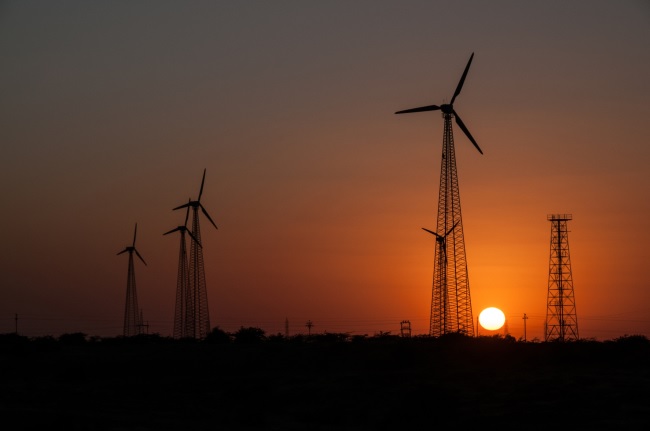
India has a vast potential of wind energy for about an estimated 695 GW across the country especially in north-west and southern states like Gujarat, Maharashtra, Rajasthan, Karnataka, Andhra Pradesh, Kerala, Tamil Nadu and Odisha. The wind energy is mainly favored because it is one of the most environment friendly, clean and safe energy source. Besides it has many other advantages like a) a low gestation period compared to the conventional energy sources; b) equipment erection and commissioning is completed only in a few months; c) low operating and maintenance costs since any fuel is not required, and d) low capital cost almost same as in the range of conventional power plants. With a total installed capacity of over 44 GW, India is ranked fourth in wind power after China, US and Germany.
The Wind Resource Assessment Programme which is being coordinated by the central government has so far covered almost all the States and Union Territories. The cost of setting up a wind monitoring station is shared between Central and State Governments in ratio of 80:20, and 90:10 in the Northeastern Region and hilly States. Usually, two types of wind turbines namely ‘stall regulated’ and ‘pitch regulated’ are being deployed in the country for the grid-interactive power. The main difference between the two turbines is that the stall regulated wind turbines have fixed rotor blades whereas pitch regulated wind turbines have adjustable rotor blades that change the angle of attach depending upon wind speed. Due to consistent efforts, as already mentioned, the country has now become the fourth largest wind power country with a potential base for the production of more than 10K MW per annum.
As could be seen from the Table above, the total wind power installed capacity was about 21,693 MW as of July 2014. This capacity has been more than doubled in about nine years ever since that stands at nearly 44,090 MW till the end of August 2023. The wind station/farm is ideally suited at sites with a reasonably high wind resource, adequate available open land with suitable terrain and good soil conditions, maintenance access to the site and nearby power grid for its connectivity. Needless to mention, the present central government has its pronounced priority of promoting more and more new and renewable energy sources including the wind stations because of their categorical advantages over the fossil fuel-based power stations which inter alia include its being inexhaustible resource, zero emission and no adverse impact on environment, being pollution free and environment friendly.
With a view to assess and evaluate the probable sites of the prime wind energy, the government has established over eight hundred wind observation stations across the country at the heights of fifty to hundred metres from the ground level with the active cooperation and assistance of the National Institute of Wind Energy. Total estimated capacity of the wind energy capacity is 695 GW in the country, of which the states of Karnataka, Gujarat, Maharashtra, Andhra Pradesh, Tamil Nadu, Telangana and Madhya Pradesh account for the bulk capacity in the same order.
Solar Power
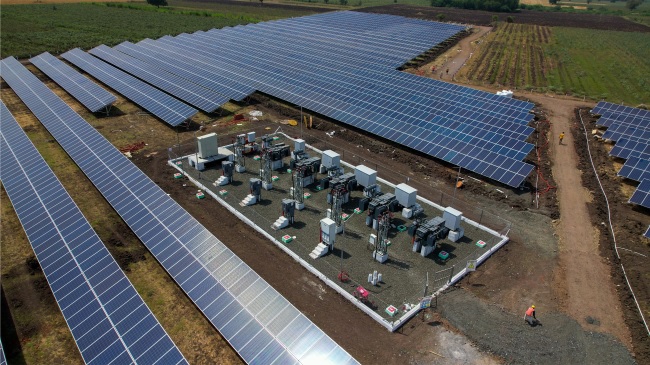
Since the ancient times, the Sun has been considered as a life-giver with its light as an energy source and worshipped by various civilization including Hindus in India. India’s geographical location between the Tropic of Cancer and the Equator enables its large parts to have an average annual temperature range not below the range of 25-27 Centigrade with almost the entire central and southern peninsula having a high solar potential. The vast solar energy potential can be also fathomed from the fact that an estimated 5,000 trillion kWh per year energy is incident over India’s land areas with most parts receiving 4-7 kWh per square metre per day. Practically, even a small fraction of the total incident solar energy, when captured well, may meet the country's bulk power requirements. Hence the solar thermal and solar photovoltaic power can effectively be harnessed providing huge scalability and to generate power on a distributed basis in India. Off-grid decentralized, and low-temperature applications are found useful from a rural application perspective and meeting other energy needs for the power, heating and cooling both in the rural and urban areas.
Thus, from an energy security perspective, the solar energy is the most abundant and secure of all available sources. As can be seen from the available data, despite its categoric advantages, the solar energy installed capacity till July 2014 was only about 2753 MW ever since the awareness about the non-conventional energy sources started in early 1980s. However, after the present government came in power in May 2014, there has been a visible impact of solar energy in the Indian power sector during the last nine years. This averment could be judged from the fact of the current solar power installed capacity of approximately 71,610 MW with grid connectivity, is a quantum growth by almost twenty-six times over the July 2014 base in just about nine years. Apart from the larger projects undertaken at the commercial scale in the public and private domains, the solar energy is also tapped by the large-scale deployment of the photovoltaic (PV) cells on the roof top of houses & commercial buildings and the collectors like mirrors or parabolic dishes to move and track the sun during course of the day.
As per the assessment of the National Institute of Solar Energy (NISE), India has a total solar potential of approximately 748 GW on the assumption of 3% of the waste land area to be occupied by the Solar PV modules. Under the scheme of the central government, the solar energy finds a focal attention in India's National Action Plan on Climate Change retaining the National Solar Mission (NSM) as one of the key Missions. Although the NSM was launched in January 2010 itself, it has been adopted as a major initiative by the present Government of India associating respective states with a view to promoting an ecologically sustainable growth while simultaneously catering for the energy security challenges. One of the key objectives of the Mission is to establish India as a global leader in solar energy. Currently, India’s Intended Nationally Determined Contributions (INDCs) target is to achieve 40 percent cumulative electric power installed capacity from non-fossil fuels by 2030 with the commensurate reduction of the emission level during the same period.
With a view to achieving the aforesaid objective, the government has launched multiple schemes to encourage generation of solar power in the country. Some of these schemes are the Solar Park Scheme, Viability Gap Funding (VGF) Schemes, CPSU Scheme, Defence Scheme, Canal bank & Canal top Scheme, Bundling Scheme, Grid Connected Solar Rooftop Scheme, and so on. Even the roof-top systems are provided with the facility of the generated power to be consumed by the owner and the excess power fed to the grid. Usually under various schemes, the works/projects of 100 to 500 KW are catered while the public and private developers undertake projects of 5 MW and above. During the last 9 years or so, the solar energy has emerged as the most significant renewable energy source contributing to the grid connected power generation as part of the government’s imperative of a sustainable growth for meeting the country’s energy requirements. As of now, the country stands fourth in solar PV deployment globally after China, US and Japan; and the solar tariff too has now become quite competitive nearly achieving the grid parity.
Small Hydro Power
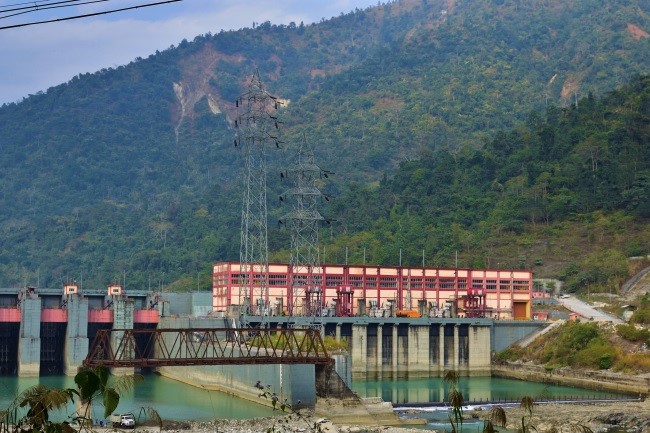
The MNRE has the responsibility for the Small Hydro Power (SHP) projects in India. Different countries have different size criteria to classify such power project, but this ceiling has been fixed at 25 MW and below in this country. Way back even small hydropower projects were dealt by the Ministry of Power, the projects up to 3 MW were transferred to the MNRE in 1989 and this capacity ceiling was further augmented to 25 MW in November 1999. The total estimated potential of the hydro power generation in the country from such small projects is approximately 20,000 MW. Most of this potential is in Himalayan States as river-based projects and in some other States on the irrigation canals. As per the existing procedure, the government facilitates statutory clearances/approvals while the public and private sector power companies undertake the SHP projects for development and operation. The Ministry aims to harness at least 50% of the potential in the country in the next 10 years.
As of now, SHPs as renewable energy source have more than four thousand identified potential locations but a vast capacity of it is yet to be tapped. Despite a vast SHP potential available in the country, the progress is not as encouraging as the wind and solar energy in the same period. As against the installed capacity of about 3,826 MW as in July 2014, only about 1,157 MW have been added in the last nine years to make it about 4,983 MW until August 2023. The main reason for the slow growth in tapping the hydro power potential is ascribed to its long gestation period owing to various statuary clearances involved, time taken for the procurement of land, difficult terrain, remote locations, geographical surprises, connectivity and power evacuation risks, and high initial cost. While encouraging new projects, the MNRE is also actively engaged in research & development as well as the renovation and modernization of the old projects.
Bioenergy
Apart from the aforesaid categories, yet another important segment relates to the generation of power from the bioenergy. This includes the large surpluses of the biomass and other wastes available in the country. The energy recovery from these very resources is indeed a good possibility and a viable alternative solution. Apart from meeting clean fuel needs, the modern bioenergy has potential to provide multiple other social and environmental benefits. For instance, bioenergy applications can also assist in mitigating air, water and land pollution. In the process, it is competent to generate business opportunities and local jobs as also reduce energy import bills. It may help in developing decentralized and independent communities. Bioenergy segment has accrued benefits to the private sector as well as in the form of opportunities to decarbonize their industries. Certain other advantages include savings on fertilizer subsidies and a reduction in waste management costs. Keeping these aspects in view, the MNRE had commenced the National Bioenergy Programme (NBP) for a period starting from April 2021 to the end of March 2026 with an outlay of Rs 858 crore in the initial phase (Phase I).
The NBP will be comprised the following sub-schemes:
1) Waste to Energy Programme covering the programme on energy from the urban, industrial and agricultural wastes/residues;
2) Biomass Programme which would cover the scheme to support manufacturing of briquettes & pellets and promotion of biomass (non-bagasse) based cogeneration in industries;
3) Biogas Programme, particularly in rural areas.
Waste to Energy Programme:
The MNRE has already been implementing an energy programme from the urban, industrial, agricultural wastes/ residues and municipal solid waste since 2018 for the recovery of energy in the form of biogas, bio-CNG and power plants employing the urban, industrial, agricultural wastes and municipal solid waste. Under the current phase (2021-26), the central financial assistance is provided for the projects for the setting of large biogas, bio-CNG and power plants, excluding municipal solid waste (MSW) to power projects. There is a tremendous scope for generating bio-CNG in the country that can meet various applications including vehicles, industries for captive energy needs, cooking etc. besides generating bio-fertilizer and the scheme of SATAT (Sustainable Alternative Towards Affordable Transportation) of the Ministry of Petroleum and Natural Gas. The estimated power potential of the wastes in the country is approximately 5,690 MW, some of the larger segments of wastes being the cattle farm & poultry, urban solid & liquid wastes, vegetable raw (solid), distillery and slaughterhouses. Till now, only a small fraction (about 570 MW) of it has been tapped.
Biomass Programme:
The government through the MNRE has been promoting and implementing the biomass power and bagasse cogeneration in the country since the 1990s although the programme has really picked up only during the last nine years in the present regime as can be seen from the data depicted in the Table in the previous section of this article. The Biomass-based cogeneration programme as launched in May 2018 has focused on promoting cogeneration for optimum use of the country’s biomass resources employing the cogeneration technology in sugar mills and other industries such as the rice, paper mills, etc. The same programme that facilitated cogeneration is now also supporting the manufacture of briquettes and pellets for use in power generation, which would go a long way to minimize the stubble burning particularly in the northern states of the country. Accordingly, financial assistance is made available for the projects for setting up of briquettes and pellets for use in power generation and non-bagasse-based generation projects.
Biomass has always been reckoned as an important energy source in the country considering the facts that it is renewable, widely available, carbon-neutral and has the potential to provide significant employment in the rural areas. It includes solid biomass comprising of the organic material of biological origins, biogas mainly methane and carbon dioxide produced by anaerobic digestion of biomass and combusted to produce power and/or heat, bio-based liquid fuel from biomass transformation used in transportation, and municipal wastes generated by the residential, commercial and public services sectors to produce power and/or heat. Solid biomass resources such as cattle dung, agriculture wastes and many other organic wastes have been well known energy sources for the mankind since ancient times. The country has a huge capacity of biomass power and gasification and with rapid growth during the last 9-10 years, the total installed capacity stands at about 10,262 MW as in August 2023, which includes bagasse cogeneration as well. Biomass based power has an added advantage that the biogas can be generated round the clock as against the solar and wind power which are intermittent in nature.
Biogas and Other Programme:
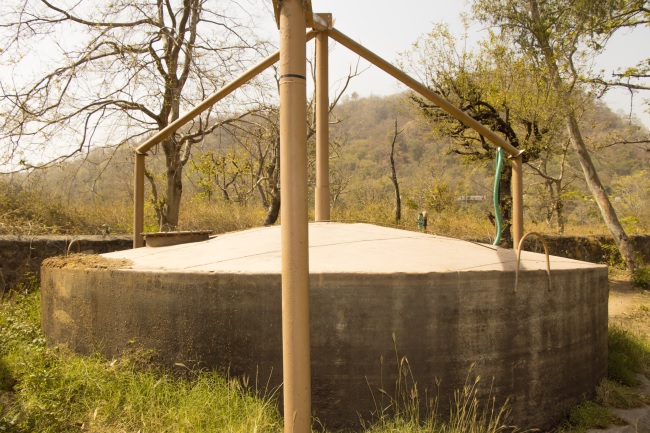
The government has promoted the installation of small biogas plants for over four decades since early 1980s under the National Biogas Programme (NBP) with a view to provide clean gaseous fuel particularly for the cooking and lighting purposes in the rural areas. Similarly, the medium sized biogas plants in the capacity range of 25 m3 to 2500 m3 per day for the biogas generation as also the thermal energy applications in the range of 3 to 250 kW have been facilitated by the MNRE from the year 2005-06 onwards. Currently, the scope of the existing scheme has been further revised to 1(one) to 2500 cubic metre capacity biogas plants with the enhanced financial assistance for the period of financial years 2021-22 to 2025-26.
Other important sources include tapping of the tidal energy which too has considerably significant potential. The Gulf of Khambhat and the Gulf of Kutch in Gujarat on the western coast, and the Gangetic Delta, Sundarban region in West Bengal had been identified as ideal locations for tidal energy in the past. Of this, Khambhat coast is considered having a huge potential of producing the tidal energy up to 10,000 MW. According to the reports, India had taken an initiative to undertake two small capacity tidal power projects of 3.75 MW and 50 MW in Gujarat (2007) and West Bengal (2011), respectively but both the projects were put on hold owing to their astronomical cost and other teething issues. Tidal energy is yet another segment with a vast potential which is yet to be properly tapped.
Conclusion
A major thrust to the new and renewable sources of energy has been given in India after the present government came in power in May 2014 with a massive repeat mandate again during the 2019 Parliamentary elections. During this period, the country has achieved more than initially set targets for the development of the renewable energy in the most segments. During the same time, India has also increasingly emerged as one of the prominent world leaders with the initiative like International Solar Alliance, One Sun One World One Grid and the Coalition for Disaster Resilient Infrastructure (CDRI) taken at the world forum. Domestically too, the country has gone on board with an ambitious transitional voyage setting a goal of 50 percent cumulative electric power installed capacity from the non-fossil fuel-based energy resources by 2030 and achieving net zero by the year 2070.
Naturally, to achieve the ambitious new and renewable energy targets and to achieve self-reliance in the energy/power sector, it is mandatory that domestically available renewable energy alternatives and potential are optimally utilized. In the aforesaid endeavor, the MNRE is serving as the nodal ministry and host for all the programmes and policies relating to the development and implementation of such energies. In this endeavor, institutions like the National Institute of Solar Energy, National Institute of Wind Energy and Sardar Swaran Singh National Institute of Bio Energy are rendering crucial assistance in the R&D and development of new technologies. Then the public sector undertakings such as the Indian Renewable Energy Development Agency (EREDA) and Solar Energy Corporation of India (SECI) have a crucial role in assisting the government in the programme implementation. Of course, the progress during the last few years in India suggests an optimistic future.
Images (c) istock.com
14-Oct-2023
More by : Dr. Jaipal Singh